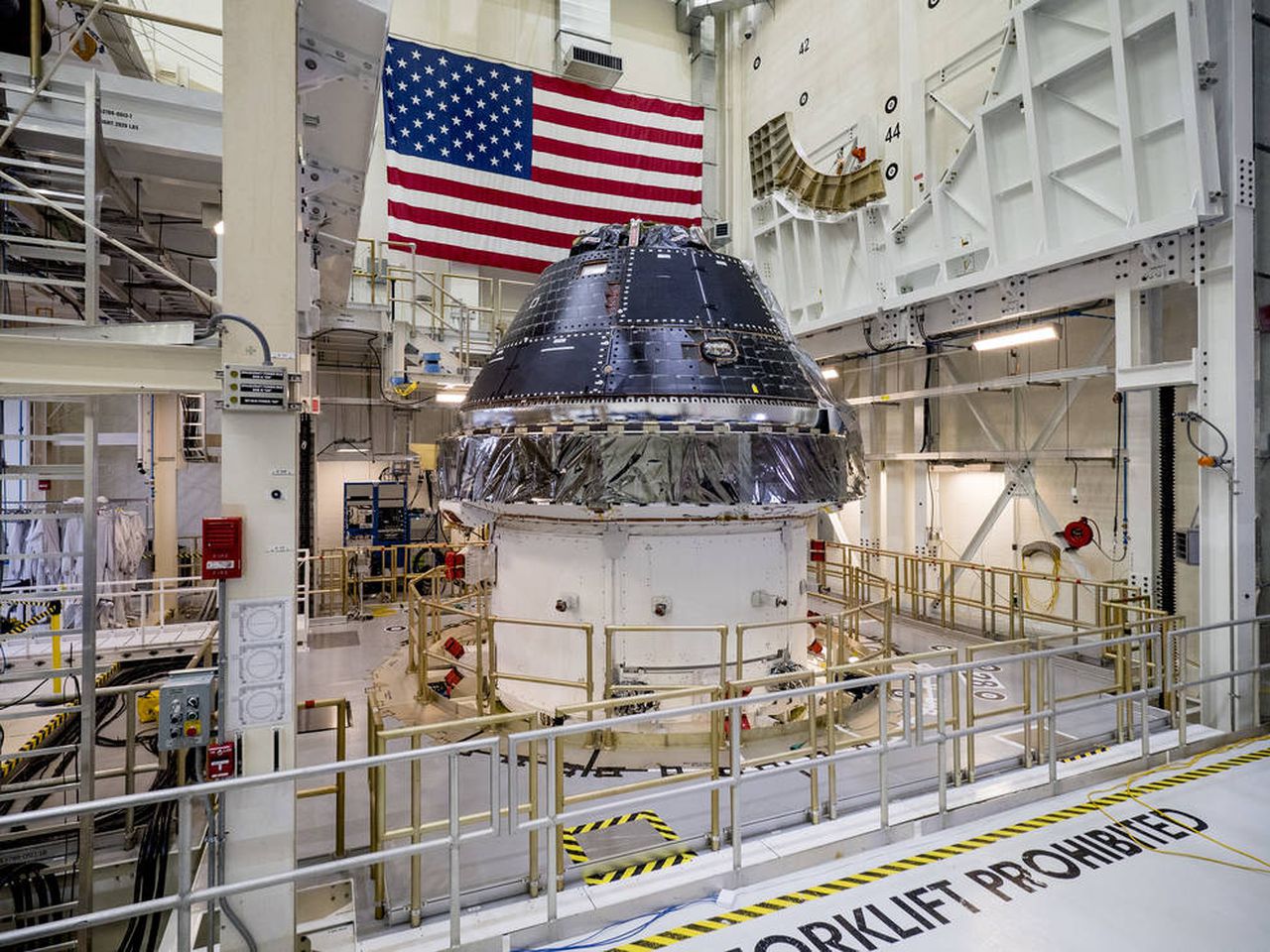NASA moves ahead on Artemis program as the first launch nears
NASA has ordered three more Orion spacecraft from Lockheed Martin for a total of six in a move signaling the agency’s commitment to moving ahead with plans to return to the moon and then venture farther with its new rocket.
Orion and its service vehicle are the upper parts of the package that carry the astronauts into deep space. NASA is now contracted with Lockheed Martin for up to 12 vehicles.
Missions one through three will launch an un-crewed Orion around the moon, a crewed mission on the same journey and a third trip to land astronauts on the surface. One of its major goals is testing a new heat shield that must protect the capsule’s interior for astronauts aboard.
NASA is attempting to get the first, un-crewed Artemis launch off from Kennedy Space Center in Florida before the end of this year. Its next launch date attempt is Nov. 14 with a 69-minute launch window that opens at 11:07 p.m. CST. NASA says “minimal work is required to prepare the rocket and spacecraft to roll out to Launch Pad 39B.
Ordering the upper stages in packages of three lets NASA “benefit from efficiencies that become available in the supply chain over time,” the space agency says.
Engineers are preparing the Orion crew and service modules now for Artemis II, the first that will carry astronauts, NASA said. They have been “powered on” and are being prepared for tests of those systems.
Last week, NASA’s Super Guppy aircraft delivered the heat shield for Artemis III from Lockheed Martin’s plant in Waterton, Col., to Kennedy Space Center. The shield – a new model for NASA – is another of the key item tests on the first launch.
The current Orion count is one capsule on top of Artemis I and two others under assembly at NASA’s Kennedy Space Center. Work is also under way on Artemis IV and Artemis V.
As for the rocket that will lift those Orions, NASA said this summer it plans to transfer space launch production, testing, manufacturing, and transport for up to 10 Artemis launches to a new contractor: Deep Space Transport LLC, a joint venture of Boeing and Northrop Grumman. NASA said it can’t put those rockets out for bid yet because of the proprietary processes used to build them.
NASA has also said its SLS work force “will continue to provide expertise for the first four Artemis missions and for future Artemis missions.” That workforce includes the SLS team at Huntsville’s Marshall Space Flight Center.
“We have a big job ahead of us to fly the first four Artemis missions and develop the new exploration upper stage,” Marshall Center Director Jody Singer said in July. “While NASA transitions the contracting approach for long-term SLS operations, the talented team that brought the rocket to the launchpad will also be needed for other projects necessary for the agency’s exploration missions.”
